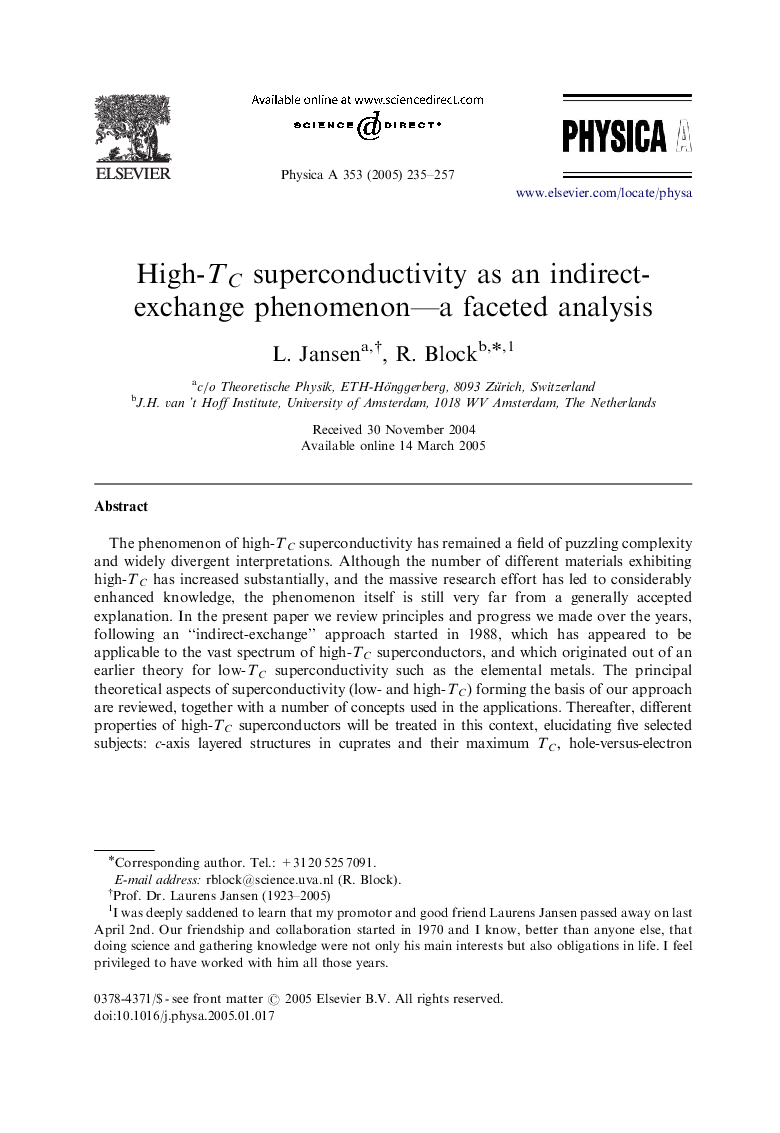| Article ID | Journal | Published Year | Pages | File Type |
|---|---|---|---|---|
| 9727689 | Physica A: Statistical Mechanics and its Applications | 2005 | 23 Pages |
Abstract
The phenomenon of high-TC superconductivity has remained a field of puzzling complexity and widely divergent interpretations. Although the number of different materials exhibiting high-TC has increased substantially, and the massive research effort has led to considerably enhanced knowledge, the phenomenon itself is still very far from a generally accepted explanation. In the present paper we review principles and progress we made over the years, following an “indirect-exchange” approach started in 1988, which has appeared to be applicable to the vast spectrum of high-TC superconductors, and which originated out of an earlier theory for low-TC superconductivity such as the elemental metals. The principal theoretical aspects of superconductivity (low- and high-TC) forming the basis of our approach are reviewed, together with a number of concepts used in the applications. Thereafter, different properties of high-TC superconductors will be treated in this context, elucidating five selected subjects: c-axis layered structures in cuprates and their maximum TC, hole-versus-electron doping in cuprates, alkali-doped C60, iodine-intercalated cuprates and compressed alkali metals.
Related Topics
Physical Sciences and Engineering
Mathematics
Mathematical Physics
Authors
L. Jansen, R. Block,
